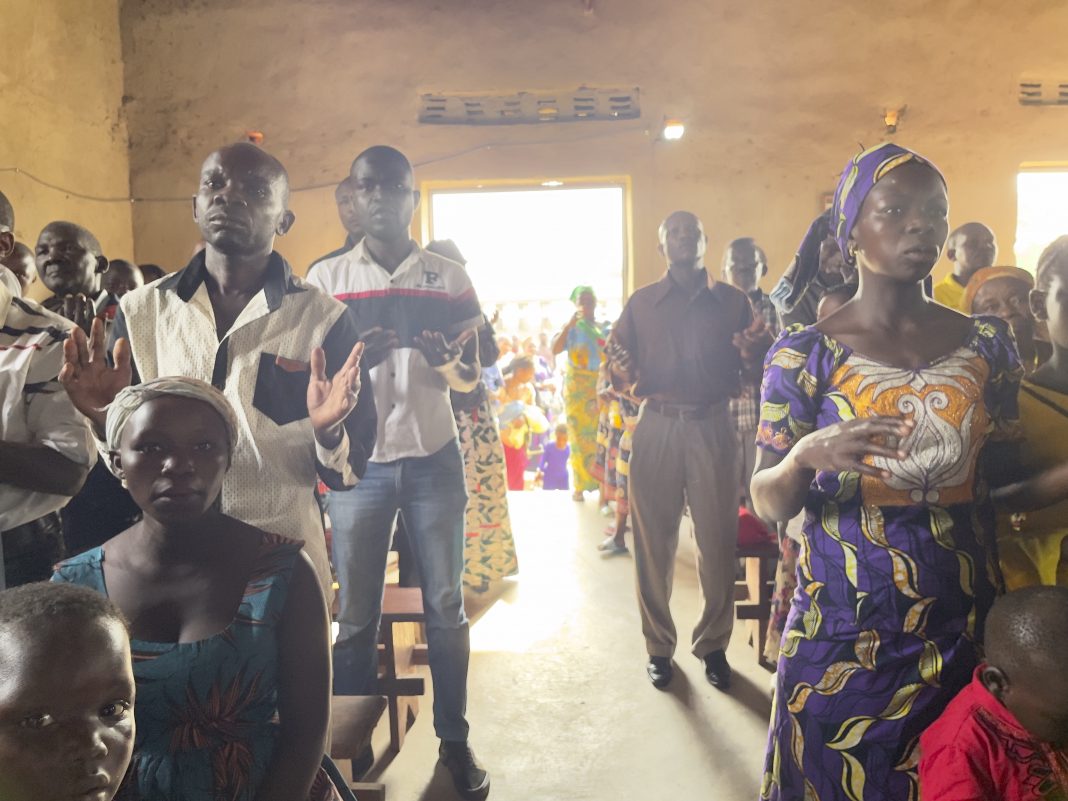“We have buried twenty-eight people. I have seen them with my own eyes. We also found three bodies in the fields and buried them too. I can show them to you. It’s not far from here. We buried them there.” The man points to the hills. He doesn’t want to show his face or say his name, but he agrees that his voice can be recorded, so that his words don’t get lost. The camera can’t shoot him; it can only look at the tall grass or at the forest towards the countryside where it is no longer possible to cultivate food. The man talks while music from Lengabo’s catholic church marks the time of truce and hope.
Voices in the villages of Ituri, a northeastern province of the Democratic Republic of Congo in the heart of Africa’s Great Lake region, often remain unnamed, like the victims. A pair of blue plastic flip-flops on the floor of an earthen house is the only possible portrait of another man who leads a group of villages between the Ugandan border and the North Kivu. He is the chief of a once-large community—over 120,000 people—that is now a land of empty houses. He still lives where men who do not wear uniforms lead ordinary lives during the day, but burn houses and slaughter other men like animals during the night.
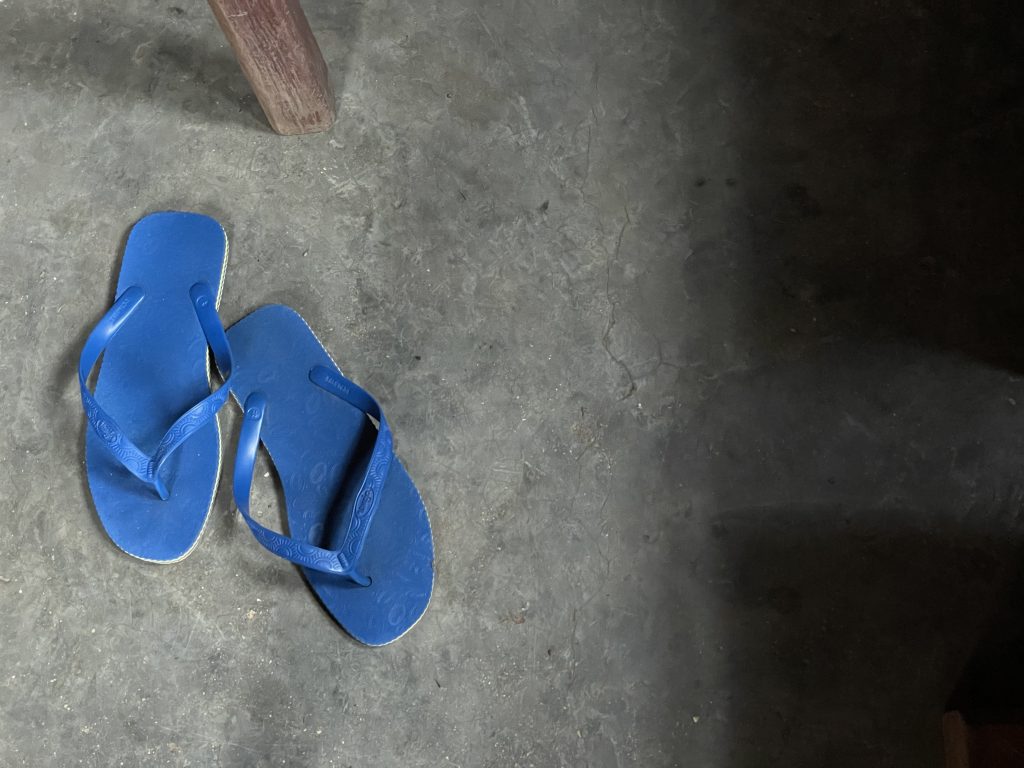
Towards Uganda is the territory of Djugu. To the South, one finds Irumu, ravaged by local militias and the ferocity of the Forces démocratiques alliée, an Islamist armed group active in Beni. Since 1998, the region has been a theater of conflict that flares up in waves, the last one in 2017. More than by mountains, rivers, and lakes, the geography of Ituri is formed by armed groups that strike terror and target civilians through their areas of influence, their fleeting alliances or fights. Their acronyms—Codeco, FPIC, Zaire, ADF, and others— give the face of reason to blind violence. It is a map of horror, of charred bodies, gutted men and women, their internal organs exposed; of mothers killed with children in their wombs, opened so that their babies can be mutilated. This is what refugees describe, what images document, and what the United Nations reports. The attacks reach up to a few kilometers from Bunia, the provincial capital, where those whom the war has displaced look for shelter.
Sometimes and in some places, the conflict holds its breath. Then, some among those who fled their homes try to return to the villages. Approximately 800,000 people went back in 2020, although 1.7 million remain internally displaced and many have left the country. Those who return know that war can break out again suddenly, in a few days, weeks or months. Yet today is Sunday and Mass is being celebrated. The music plays and the corn dries in the sun at Dele and Lengabo. And at Tchunga, not far from Bunia, the village it is not a place of horror, but a place of welcoming.
To leave Bunia in the direction of Irumu, along the road leading to North Kivu, is to leave behind a safe place—as safe as a city in the middle of a war can be. Early in the morning, the sun is pale pink and the trees are not yet green, but black. The earth is not yet red. It’s a pale pink that reflects itself in the puddles of dirt roads where one can easily get bogged down, stuck between two walls of forest.
In the small town of Dele, in front of the village chief’s house, the children work: a hoe in their hands, two chickens in their arms. A group of men chat. It is Sunday and the hypnotic rhythm of the Congolese music comes from the church square across the street. “We ask for help because life has recently become too difficult. We do some rural activities to survive,” Yoshua Businiliri explains. He looks at the red, fleshy flowers that dominate the fields, whose green hue is so intense that not even the fragile sun of dawn can soften it. Land abounds in Ituri, but it does not produce enough: It can be cultivated only near the houses; no one risks going to the hills where the road thatcrosses Dele leads.
Those hills hide Lake Albert, the seventh-largest African lake, whose name recalls the time when Europe got its hands on Africa: Albert, husband of Queen Victoria. It was the British Samuel Baker who made the lake known to the continent that would decide the future of Congo. However, until 1997, the lake—“Nyanza” in the local language—bore the name of Mobutu Sese Seko, the man who, by forming a dictatorship, destroyed the dream of democracy born from independence from Belgium. Before that, the lake was known as Mwitanzige: There is a legend that says that locusts – ezige – die when they cross the lake. Today, perhaps, oil could change its fate and maybe its name—the oil discovered beneath the lake’s surface and credited with being among the causes of the new wave of violence.
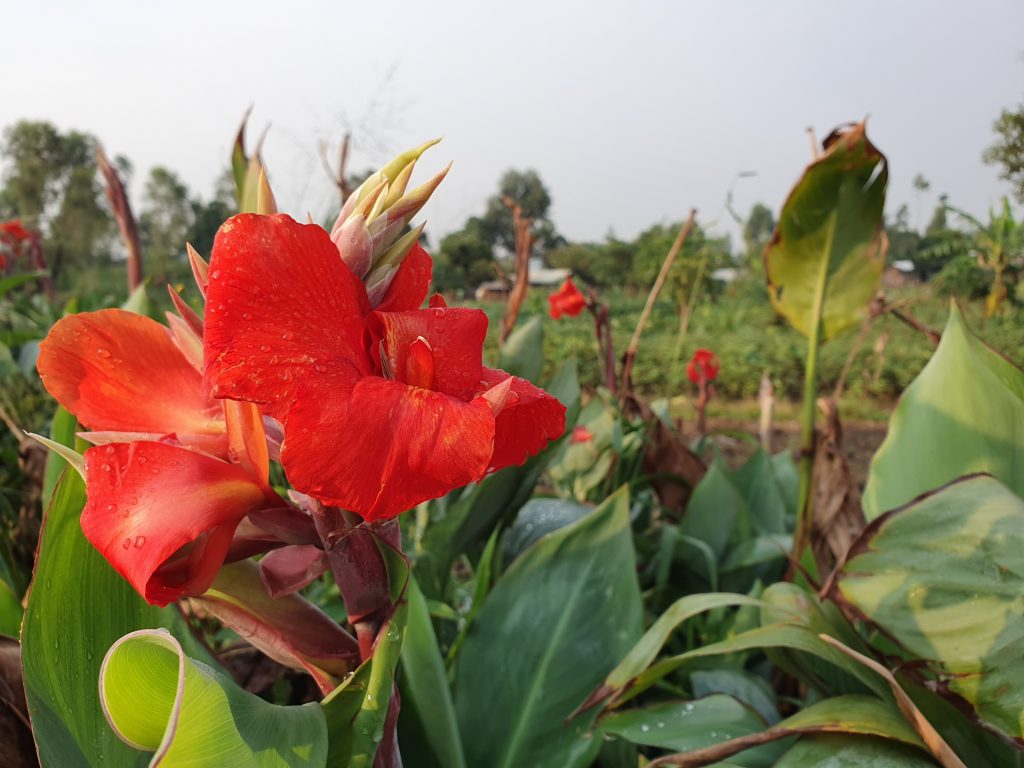
People arrive slowly from the village center and the countryside as the sun rises and makes the tin roofs on the damp hills iridescent. The church is small for everyone; worshippers sit outdoors on wooden benches or low, three-legged stools in front of the stone-decorated facade. The children wait silently, leaning on three poles: a football goal on a huge field of wild grass crossed by a small path. The women wear colored dresses and fabrics, almost starched, and their hair is wrapped in scarfs or skillfully styled. It is a feast day, like a summer Sunday in any small town of rural Italy, and perhaps more.
The priests wear the bright green that is worn at this time of the year. The little dancers are dressed in white. A cross is carried in the procession; hands move and hips swing. Today, the Gospel tells of the miracle of the healing of a leper. Here, where the Covid pandemic finds almost nothing to contain it and where Ebola, with its deaths and the stigma that weighs on survivors, is not yet a memory, people know that it is not only war that kills: “Children suffer from diseases but lack medicines. Especially malaria affects them the most. For this reason, we ask for help: a mosquito net because mosquitoes are too many in the villages of the territory of Dele. We need money for medical treatments,” Yoshua explains.
There is calm in Dele. The war seems far away. Here, too, those fleeing home take refuge. “The displaced need help because they sleep in the bush due to lack of security and shelter. Others stay in the schools, in the church, and elsewhere. They have lost almost everything,” he adds.
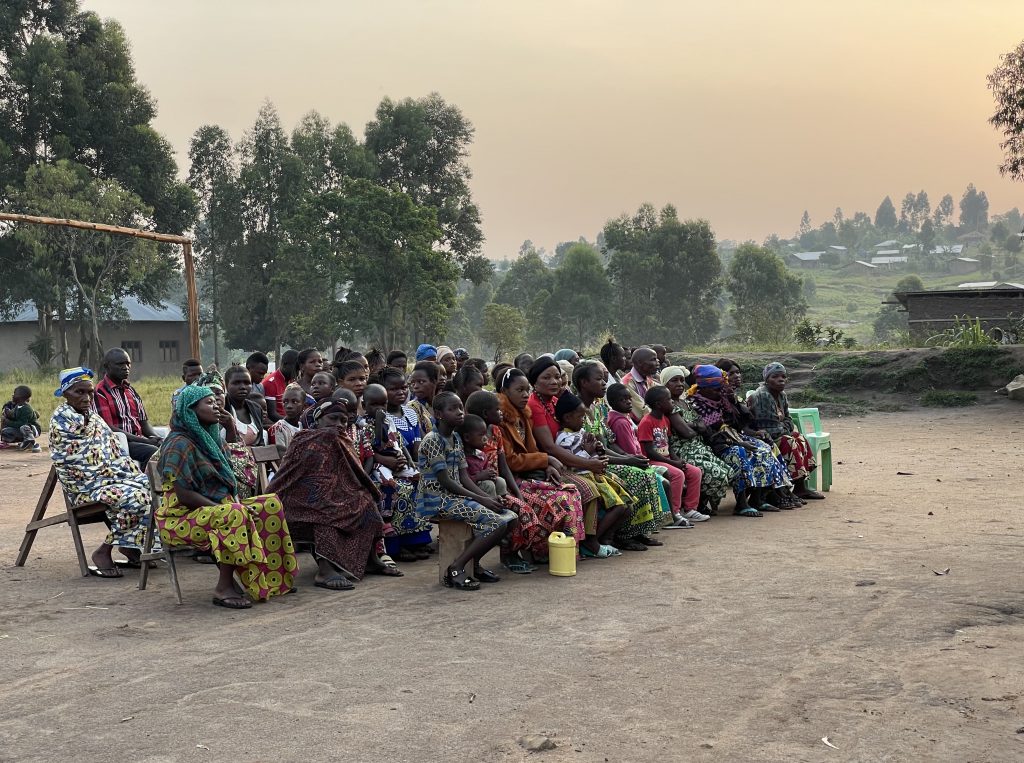
It is a moment for the sun to rise, as well as a moment for it to set: The equator passes less than two hundred kilometers from here. In Lengabo, along the road that leads from Bunia to Irumu and then to Beni, the Mass is ceelbrated by the White Fathers, the Missionaries of Africa, a religious order established in Algeria at the end of the nineteenth century and that moved to the heart of the continent. Today, they have a center for vulnerable children, the School of Peace, in Bunia. Every Sunday, the fathers join the devotees in the villages.
The altar with its simple white cloth, the light of an incandescent bulb hanging from a wire above it, high wooden vaults: The church is packed here, too. People dance while the choirmaster, wearing a long green cassock edged in white, guides voices and drums. Outside, the empty and dilapidated houses offer a reminder that a fierce conflict is going on and that Lengabo has counted its deaths.
“Most of them were innocent people,” the man who hides his name and face says. “They were among the displaced. We had welcomed them here. We didn’t know they were militiamen. They had hidden their intentions. They were the ones who started fighting the loyalist army.”
He adds: “Some bodies were armed and others were tied up … We could not distinguish who they were. Even the militiamen were in civilian clothes. Most of them were civilians. There were also soldiers among the deaths, and they were buried somewhere here. Because when there is war, there are deaths on both sides.”
Even in the village led by the man in blue sandals, there is a respite, yet there are areas where he no longer dares to go or where he stops for only a few hours. “The militia has changed strategy, it is not in the bush. It is scattered among the population. Here is where it operates: It operates and then returns among the people. This is the danger,” he explains.
The same is likely to have happened in Lengabo when the village was “sealed off” by a police cordon at the beginning of the year to hunt down militiamen. The arrests were followed by violence and deaths. Esperance Mujaganyi, a thirty-eight-year-old farmer, fled. She produces corn, which becomes flour or mandro, a fermented drink.
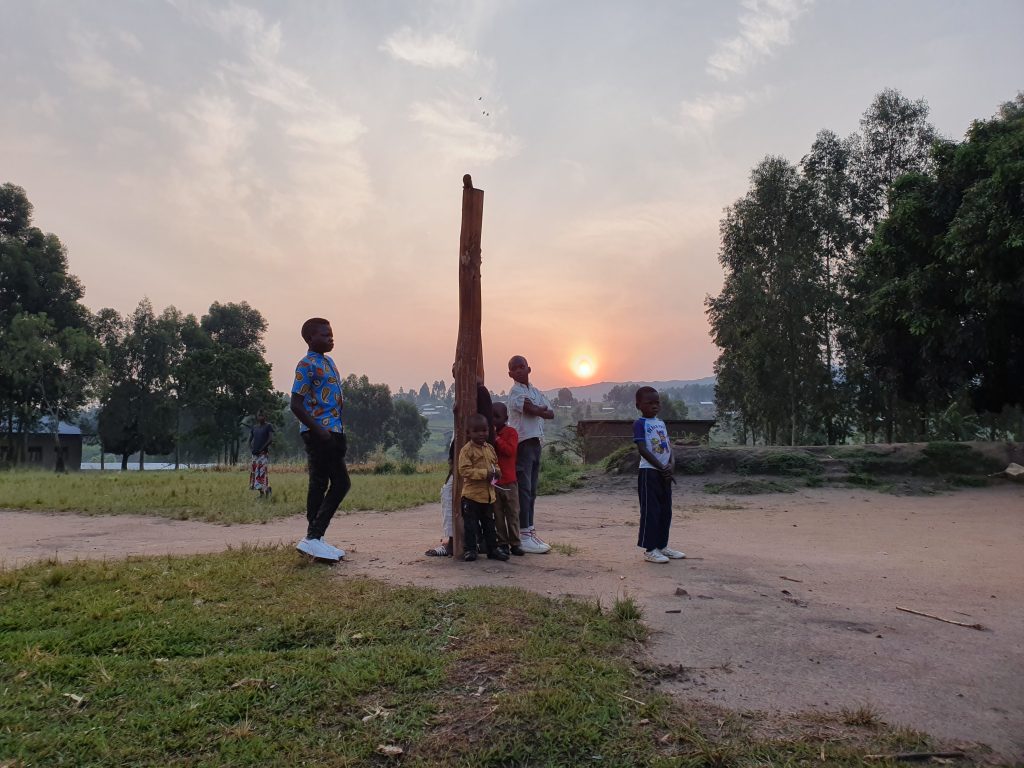
A child walks to the church alone. He is five or six years old: long, brown pants and a T-shirt resembling those of English schools, with blue, white, and red bands, and a small crest. Not far away, Esperance sits in front of her house and of what is still just the reed skeleton of a building. Her long brown skirt blends into the ground and into the walls made of earth. Her ears bear two points of gold. “We are slowly resuming the life we had before the war,” she says. But she doesn’t want to talk about that day. She jumps up when asked about the fights.
Every time there is an attack, people leave the villages “because when there is war, the bullets fall and the metal sheets get punctured,” the man explains. They know that everything will be destroyed and stolen, and they will have to start over, every time, once they return. Death can knock on the door any day and militiamen do not even need an AK-47: A match is enough to set a house of dry grass on fire. “You leave your home and all your belongings, and life gets harder and harder on the move to save yourself from war. If you have money with you, you spend that money with no other input and it’s very complicated,”Esperance says.
At least one thousand sixty-seven summary executions and arbitrary killings were committed in Ituri in 2021, as well as all kinds of human rights violations from rape to torture, according to the United Nations Joint Human Rights Office. And this is just one corner of Congo, where the most underreported crisis across the world takes place. Data probably underestimate the scale of the tragedy because the victims often remain silent for fear of being stigmatized. Verifying the facts and documenting what happens in the villages is difficult even for international organizations that often do not reach the most remote areas of the province. Congolese soldiers have been deployed in Dele and Lengabo but people don’t trust them. The soldiers ask for money at checkpoints, like bandits, they say. They are responsible for abuses and violence too, according to the United Nations.
However, villages are more than just places to flee; they can also be safe places to live. Tchunga is not far from Bunia. A rough but busy road leads there. Things are going well now, explains the village chief, Jean-Paul Risisa. Wearing a gray suit and immaculate shirt while standing with his deputy and secretary, he says that welcoming those who have been displaced is not always easy: “There are almost three thousand people just in our locality, and they are many. We welcome the displaced very well, but we do not have the means to build (enough houses) for them.” Behind him, Tchunga is an open-air construction site. “There are many people here and many are starting to build: Tchunga has become like a city,” he adds.
Life centers on a well. Yellow, pink, and blue plastic cans wait in an orderly row to be filled amid the laughter and splashes of children. The well was built by humanitarian organizations—the United Nations High Commissioner for Refugees and AIDES—because water, in this country that seems to float on it, is as precious as the gold in which the subsoil is rich. However, it breaks backs, especially those of women and children. Until the well was dug, the people of Tchunga had to walk at least five kilometers to get water, and they washed their clothes in the river. Today, water is essential for a community that is growing under the pressure of a humanitarian emergency. Protecting the well is key, as it, too, can become a target of violence. The community takes care of it, just as it takes care of the displaced.
“When your neighbor has a problem, you can’t deny him (help). We help them by giving space in our homes to some people,” Daniel Bakanoba, secretary of Tchunga, explains. “Others live for free in our courtyards and there is a minority who rent a house. But we are not able to respond to every need because when you leave your home, your field, your possessions or when you have children, your needs are enormous.” The houses, he says, are not all “beautiful.” “We’re doing our best.” As is Didi, a local driver. Two women live in his house; each has seven children. They arrived on foot from Bokela a few days ago, their clothes torn and their lives needing to be rebuilt. A pagne—the fabric that women wear around their waists—is always around their hips. Their beds are covered by mosquito nets attached to the walls. The semi-darkness keeps the rooms cool; a little light filters through an antique pink metal window. They were farmers and are now on the brink of starving.
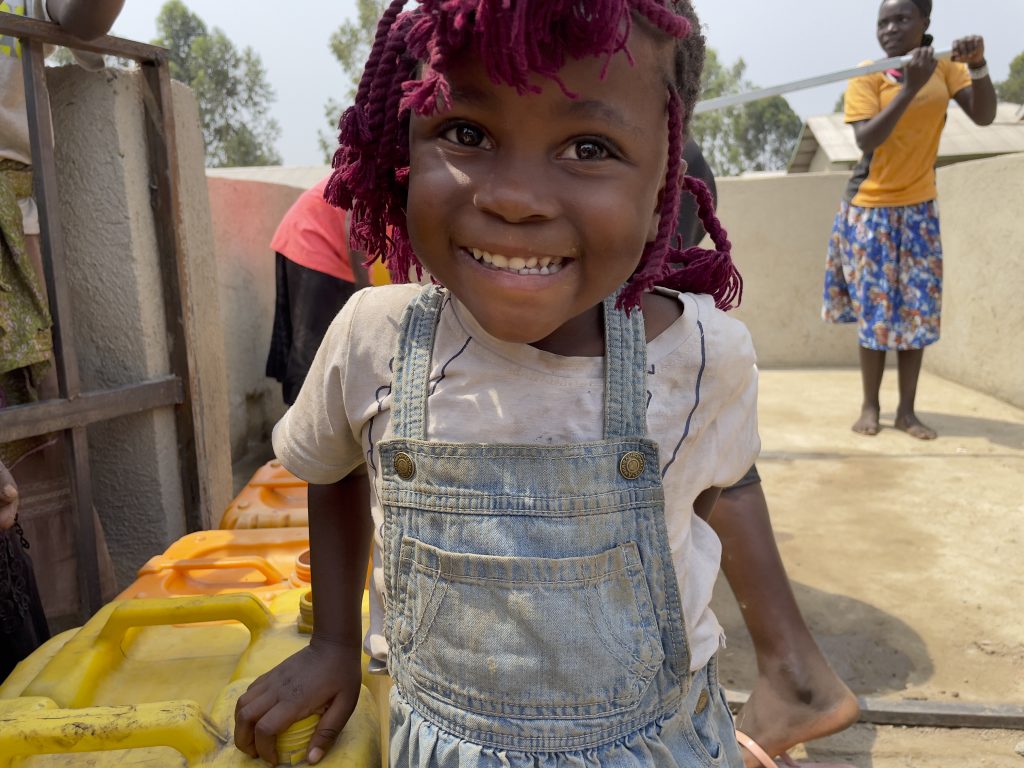
It is a dejavù that seems destined to be lived a thousand times in the villages of Ituri. Rumors, still without evidence, say that it all started in Djugu in 2017 with the mysterious death of a priest—a murder, according to some voices, never proved. It would have rekindled ancient hatred between the Lendu and Hema tribes. But the truth is much more complex: It is hidden in the folds of Ituri’s recent history and in the heart of a land that seems to be too rich to live in peace.
THE FORGOTTEN WAR OF ITURI
Fleeing war, weaving life in IDP camps of Bunia
Between horror and hope in the villages of Ituri
“Don’t call it ethnic. Ituri confict is a mystery”
Credits: Elena L. Pasquini
Production and swhaili translation: Akilimali Saleh Chomachoma


